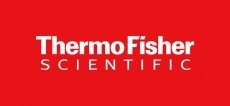Unisys, GenuOne team up on healthcare traceability
provide product tracking and authentication software to the
healthcare and life sciences industries.
Unisys offers a programme called Guardian Framework, which combines radiofrequency identification (RFID) technologies, bar codes, covert inks and other tagging technologies, and will now promote GenuOne's software as part of this package.
The joint approach will include applications for electronic pedigree, diversion control and anti-counterfeiting, it said, adding that it will answer the supply chain protection requirements of US federal Prescription Drug Marketing Act (PDMA) as well as laws enacted at the state level in Florida and California requirements and the Model Rules of the National Association of Boards of Pharmacy (NABP).
"The healthcare and life sciences industries are at a tipping point," said Todd Skrinar, a partner in Unisys Healthcare and Life Sciences practice. "Our clients believe that shrinking the gaps in the extended supply chain, while challenging, ultimately serves the best interest of all partners.
Unisys and GenuOne have already integrated a pre-configured template of GenuOne's TraceGuard track and trace software into the Guardian Framework.
RFID market forecasts
Meanwhile, a market report entitled RFID Forecasts, Players and Opportunities 2005-2015 has predicted that across all industries, RFID will repeat the bar code market trend, where the market grew then declined.
"The value of the RFID market will initially peak before the annual numbers of tags sold peak," according to the report, published by UK-based IDTechEx.
Technical problems are slowly being overcome with the previously little used UHF frequency and the market for item level RFID tagging of medicines, baggage, animals, books and tickets is growing strongly in value.
"In 2008, 6.8 billion tags will be sold for these applications as well as 15.3 billion tags for pallets and cases," it predicts.
Alongside this, the market for RFID scanners is expected to reach $1.14bn in 2008 for Electronic Product Code (EPC) interrogators and $750m in the same year for other types of scanners, such as those for Near Field Communication.
Forecasts by territorial region show that by 2010, 48 per cent of RFID tags by volume will be sold in East Asia, followed by 32 per cent to North America.
This report also includes growth and market forecasts for chipless RFID tags - tags which contain no silicon chip - tags in the form of smart tickets and cards, and semi-passive and active tags. In 2010, 15 per cent of all tags will be chipless, such as printed thin-film transistor circuits and Surface Acoustic Wave Devices, rising to 55 per cent in 2013 as tags that cost under five cents become ubiquitous.









